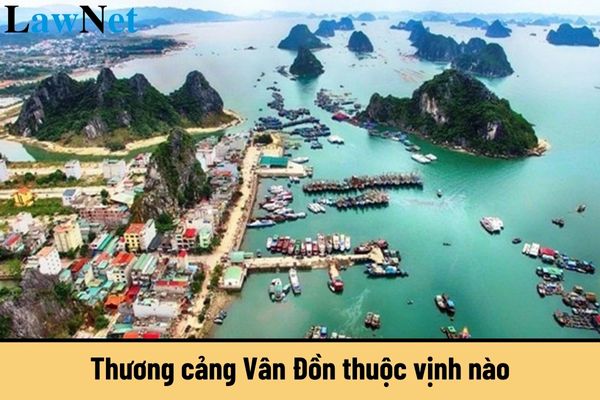Which bay is Van Don Port located in? What are the principles for selecting textbooks in educational institutions in Vietnam?
Which bay is Van Don Port located in?
Van Don Port is located in Bai Tu Long Bay, within Quang Ninh Province, Northern Vietnam. This port is renowned in the commercial history of Vietnam, especially during the feudal period, when it played a significant role in international trade, notably with countries like China, Japan, and other Southeast Asian nations.
Students may refer to more detailed information about Van Don Port:
|
Van Don Port Special Geographical Location |
*Note: The information is for reference only./.

Which bay is Van Don Port located in? What are the principles for selecting textbooks in educational institutions in Vietnam? (Image from the internet)
What are the principles for selecting textbooks in educational institutions in Vietnam?
Under Article 2 of Circular 27/2023/TT-BGDDT, the principles for selecting textbooks in educational institutions in Vietnam are as follows:
- Textbooks must be selected from the list approved by the Minister of Education and Training for stable use in educational institutions.
- Each grade selects one textbook for each subject, educational activity (including academic content and topics if any) to be implemented in the educational institution (hereinafter referred to as the subject).
- The selection of textbooks must ensure democracy, objectivity, and transparency, and serve the best interests of students.
What is the process of selecting Geography textbooks in Vietnam?
The process of selecting textbooks in educational institutions is conducted according to Article 7 of Circular 27/2023/TT-BGDDT as follows:
(1) The council develops a plan to organize textbook selection in the educational institution; and assigns tasks to the council members.
(2) Organizing textbook selection within the professional team
- Based on the plan of the council and textbook selection criteria, the leader of the professional team develops a plan to organize textbook selection for each subject structured in the professional team, and reports to the head of the institution before implementation;
- Organizes for all subject teachers (including contracted, seconded, invited, and inter-school teachers) to participate in selecting the textbooks for that subject;
- No later than 20 days before the first meeting of the professional team, the leader organizes for subject teachers to review the textbooks, write evaluation reports, and assess textbooks based on selection criteria;
- The leader of the professional team organizes meetings with subject teachers to discuss and vote on the selection of one textbook for that subject. If there is only one textbook approved by the Minister of Education and Training, the team selects from the decision, without voting.
+ The textbook selected must have at least half of the subject teachers voting for it. If no textbook receives over half the votes, the team must discuss and vote again; the selected textbook is the one with the highest votes in the second ballot.
In both ballots, if two textbooks receive the highest number of votes equally, the leader of the professional team decides on the selection.
+ Meetings are documented, noting teachers' opinions on textbooks, with the signatures of the leader of the professional team and the minutes recorder;
- The leader summarizes results, compiles the textbook list chosen by the team, signed by the leader and the recorder.
(3) The council meets to discuss, and assess the textbook selection of the professional teams; certifies meeting minutes of the professional teams; reviews teacher evaluations; consolidates results into minutes containing comments and evaluations, signed by the Council President and Secretary.
(4) The council proposes the textbook list selected by the professional teams to the head of the institution as per this Circular.
(5) The educational institution prepares the textbook selection dossier for submission to the Department of Education and Training (for primary and lower secondary schools), and the Department of Education and Training (for upper secondary schools). The dossier includes:
+ Establishment decision of the Council by the educational institution;
+ Council meeting minutes;
+ List of selected textbooks by the institution.

